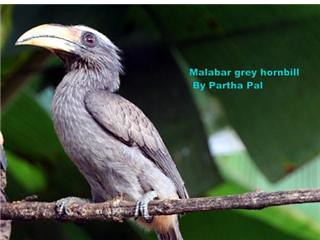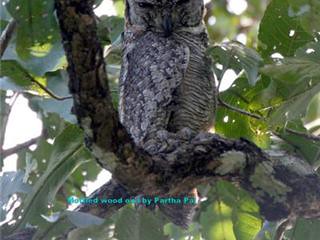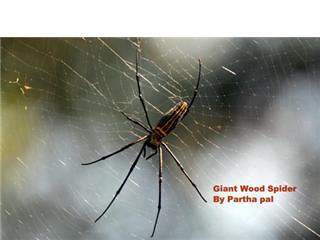Posted by
Susan Sharma
on
February 04, 2008
Web 2.0 technologies
Web 2.0 technologies are creating a revolution in specialised groups of activists, NGOs and social changemakers.
The utility will be more in specialised and thematic groups as it is much easier to handle information overload in such communities.
Online interactive quiz programs, chat programs and games can add stickiness to the website and also promote discussion and debate on issues usually marginalised or ignored.
|
Posted by
Susan Sharma
on
February 04, 2008

A holistic view on climate change
There has been much debate about climate change perhaps because we cannot see carbon dioxide when we exhale, or when we burn oil and coal to heat our homes, or use petrol to power our cars or fly planes. We do, however, have scientific instruments that can
accurately measure what we humans produce and the increasing amount of carbon that we are adding to our environment.
The data is irrefutable - carbon dioxide concentrations have been steadily
increasing in our atmosphere as a result of human activity since the earliest
measurements began. We know that on the order of 4.1 billion tons of carbon are being added to and staying in our atmosphere each year. We know that burning fossil fuels and deforestation are the principal contributors to the increasing carbon dioxide concentrations
in our atmosphere. We know that increasing CO2 concentrations has the same effect as the glass walls and roof of a greenhouse. It lets the energy from the sun easily penetrate but limits its escape, hence the term greenhouse gas.
Observational and modeling studies have confirmed the association of increasing CO2 concentrations with the change in average global temperatures over the last 120 years. Between 1906 and 2005 the average global temperature has increased 0.74 degrees C.
This may not seem like very much, but it can have profound effects on the strength of storms and the survival of species including coral reefs.
Eleven of the last 12 years rank among the warmest years since 1850. While no one knows for certain the consequences of this continuing unchecked warming, some have argued it could result in catastrophic changes, such as the disruption of the Gulf Steam
which keeps the UK out of the ice age or even the possibility of the Greenland ice sheet sliding into the Atlantic Ocean. Whether or not these devastating changes occur, we are conducting a dangerous experiment with our planet. One we need to stop.
The developed world including the United States, England and Europe contribute disproportionately to the environmental carbon, but the developing world is rapidly catching up. As the world population increases from 6.5 billion people to 9 billion over the
next 45 years and countries like India and China continue to industrialise, some estimates indicate that we will be adding over 20 billion tons of carbon a year to the atmosphere. Continued greenhouse gas emissions at or above current rates would cause further
warming and induce many changes to the global climate that could be more extreme than those observed to date. This means we can expect more climate change, more ice cap melts, rising sea levels, warmer oceans and therefore greater storms, as well as more droughts
and floods, all which compromise food and fresh water production.
The increase in population coupled with climate change will tax every aspect of our lives. In a world already struggling to keep up with demand, will we be able to provide the basics of food, clean water, shelter and fuel to these new
citizens of Earth? And will governments be able to cope with new emerging
infections, storms, wildfires, and global conflicts?
So is there any way of avoiding these apocalyptic visions of the future coming
true? Many have argued that we simply need to conserve, to alter and regress our standard of living and block the industrialisation of developing countries. In
my view this is extremely naive thinking. Furthermore, even the most optimistic models on climate change show a dramatically altered planet Earth going forward even if we embrace all alternative options such as wind and solar energy, and electric cars. Our
entire world economy and the ability of modern society to provide life’s basics, depend on the very industrialisation that contributes to our possible demise.
Yet, sadly, very little thinking, planning or projections about how to cope
with the carbon problem and climate change have taken into account the
capabilities of modern science to produce what we have long needed to help solve these global threats.
It is clear to me that we need more approaches and creative solutions. We need new disruptive ideas and technologies to solve these critical global issues. This is where, I believe, biology and genomics, come in.
Source: Excerpts from the annual Richard Dimbleby Lecture on BBC on (Tuesday 4 December 2007) by Dr J Craig Venter
|
Posted by
Susan Sharma
on
February 02, 2008
|
Posted by
Susan Sharma
on
February 01, 2008

Gene tweaked but is this brinjal safe to eat?
CAN YOU BT THIS: A genetically modified brinjal grows in open field in
Hamirpur.
New Delhi: Genetically modified brinjals may soon land on your plate and no that is not good news.
Experimental genetically modified (GM) crops must be grown under strictly monitoring, but a company is growing Bt brinjal in open air in a place called Hamirpur near
Delhi.
The Bt brinjal has been genetically modified for better immunity against pests, and though the Genetic Engineering Approval Committee has permitted its test information on the crop is hard to get.
CNN-IBN tried to get information on the Bt brinjal’s safety through the Right to Information Act but was denied permission on the ground that it would compromise the commercial interest of companies. Sungro Geeds, which
is carrying out the tests, is sure that the brinjal is safe.
"All reports we have seen and what scientists have said is that it is safe," says K V Somani, CEO of Sungrow Seeds.
But Somani hasn’t tasted the Bt Brinjal his company grows, saying that would violate the rules.
Brinjal from the farm is dumped in a pit and left to decompose—a serious violation of rules, which say that even the body of the plant should be burnt. There is a barbed fence but it is hardly any protection against
animals that can enter and feed on the brinjals.
Rules say GM crops must be kept segregated and destroyed to prevent the threat of bio-contamination. Asked to explain allegations against the checks on his company’s BT brinjal, Somani said: "It is a democracy."
Environmental activists are worried the Bt brinjal may enter the market without proper tests as
Delhi does not even have a state regulatory board to oversee the trials.
"This matter has gone beyond research and development and entered the field of public health and safety," say
Greenpeace activist Jai Krishna.
|
Posted by
Susan Sharma
on
February 01, 2008

Using flyash
Fly ash is a by-product of coal combustion in thermal plants. Presently majority of the coal ash generated is being handled in wet form and disposed off in ash ponds which is harmful for the environment and moreover ash remains unutilized for gainful applications.
India has sufficient coal reserves. In India almost 65-70% of electricity production isdependent on coal which produces a huge quantity of Fly Ash as residue which is allegedly a waste product in Thermal Power Stations.
Fly Ash has a vast potential for use in High Volume fly ash concrete especially due to its physic-chemical properties. Using fly ash in construction activity is environment friendly, reduce energy demand and restrict carbon emissions.
Transco Delhi and DMRC have been using flyash in construction activities.
When mixed with lime and water the flyash forms a cementitious compound with properties very similar to that ofPortland cement. Because of this similarity, fly ash can be used to replace aportion of cement in the concrete, providing some distinct quality
advantages.The concrete is denser resulting in a tighter, smoother surface with lessbleeding.
A good amount of research has already been done inIndia and abroad on its strength and other requisite parameters.
|
Posted by
Susan Sharma
on
January 30, 2008

Thattekhad “ The” Birding destination of South India-Dec 2007 ( Part II)
-Posted by Partha Pal in Delhibird yahoo group
Post lunch trip was with Girish (Mrs Sudha’s son) . I accompanied Girish and three Foreigners(Swede birder and Australian birding couple) to a different part of forest on lookout for Waynad laughing thrush. Though
it eluded us I got my first sighting of Malabar hornbill,
Malabar parakeet, Hill mynah ,Ruby throated Bulbul and Pompadour green pigeon. However the location for Waynad laughing thrush and the path was full of leeches . I was literally hooked on to shoes removing every time a leech crawled up, still I had eighteen
bites around the ankle to calf muscle. Other guys also met with the same fate except the lady. Reasons unknown ,probably fairer sex has advantage even in jungles.
Next two days were with Eldhose and I was looking forward to them. So much was written about him that I already had image of him bigger than life. Well he turned out to be very soft spoken, gentle ,down to earth person, whose only love is birds.
His preciseness of the location , sharp hearing , recognition of calls , all are amazing. There were so many incidents in two days you could only be stunned with Eldhose’s magic.
So we started of with Red spur fowl behind his house, white cheeked barbet ,Malabar grey hornbill at the Papaya tree next to his house.
For photographers he also creates a hide sort of situation where you can have really close photos of birds. Then it was the time of Mottled wood owl little distance from his home, followed by Blyth’s pipit. We took a brief break for breakfast. Post breakfast
session yielded Grey breasted prinia, Crested hawk eagle – As per Eldhose , a sub species of changeable hawk eagle which does not change, in sanctuary area – we saw Grey headed bulbul, Crimson backed sunbird, Brown breasted flycatcher, Crested serpent eagle,Grey
jungle fowl, White bellied treepie, fleeting glimpse of Crested goshawk a grizzly squirrel , flying lizards ,Asian Bird southwing and other butterflies.
Post lunch session produced a amazing collection of birds. We visited another part of the sanctuary. Blue throated flycatcher,Dark fronted Babbler, Chestnut tailed starling the south India sub species, Heart spotted woodpecker, Large cuckooshrike,Black headed
Cuckooshrike, Drongo cuckoo, Black napped monarch, Asian paradise flycatcher – all this at one location. Little further in the Jungle we saw a giant squirrel, plum headed parakeets, Fleeting glimpse of Besra and Chestnut winged uckoo.Malabar Parakeet, and
the Highlight of the trip – The beautiful Malabar trogon. I was so sucked up by the beauty, I forgot to shoot photos. The day does not end here. In absolute darkness Eldhose tracked down Indian Pitta and with the help of a small torch another species has etched
onto my memory.
Next day was my last day at Thattekhad and we had still lot of names in the list.. We started of with Black Baza – a beautiful princely bird. We had to wait nearly 45 minutes for the lone baza
sighting. While waiting for Black baza, White bellied and Rufous treepie, Large cuckoo shrike, Brown shrike, Black naped, Black hooded and Golden oriole , Black crested bulbul (Ruby throat -south Indian sub species)were seen. Next
in line was Blue bearded beater . Post breakfast sightings produced,Lesser yellow naped woodpecker – south Indian sub species, Streakthroated woodpecker and Yellow billed babbler . Then we took a long and beautiful drive to Edamalyar barrage where we
saw Dusky craig martin, White bellied treepie, Rufous babbler and on the way Common hawk cuckoo, Shikra and Paris peacock butterfly.
After having a hefty and late lunch at one of the Kerala dhaba we proceeded toward the sanctuary gate. Target was White bellied woodpecker, however due to less time I opted for Dollar bird. As usual Eldhose tracked down the Dollar bird and in process we saw
lots of Hill mynah,Malabar hornbill, Grey jungle fowl, Rufous treepie with a kill, hordes of caterpillar and a lone Oriental honey buzzard.
Quite a few names were still pending in the wish list, but I ran out of time, probably I can cover in my next trip.Eldhose has given a open offer - ten days in south India. He will show you 300 species.
Treated to a Icecream by Eldhose I said bye to Thattekhad . Thanking Eldhose and my stars that at least some part of the dream has been fulfilled. Those who are interested in hiring Eldhose services need to book minimum month or two in advance.


|
Posted by
Susan Sharma
on
January 27, 2008
A Wildlife Conservation Society (WCS) study revealed that man and nature are threatening at least six distinct species of the African Giraffe, which are highly endangered and could face extinction if not protected.
The extinction threat was real since giraffes are listed as lower risk in the World Conservation Union (IUCN) Red List, "under the assumption that giraffe species are considered a single species and therefore managed as such".
"Severe poaching and armed conflict in Somalia, Ethiopia and Kenya reduced the number of reticulated giraffes from about 27,000 individuals in the 1990s to currently fewer than 3,000 individuals over the past decade."
|
Posted by
Susan Sharma
on
January 23, 2008
Cigarette butts, snack wrappers and take-out food and beverage containers are the most commonly littered items. Cigarettes are one of the most insidious forms of litter: Each discarded butt takes 12 years to break down, all the while
leaching toxic elements such as cadmium, lead and arsenic into soil and waterways.
|
Posted by
Susan Sharma
on
January 23, 2008

Dams Coming Down
Two years of closed-door negotiations between farmers, Indian tribes, fishermen, conservation groups and government agencies have resulted in an unprecedented (but very conditional) agreement
to remove four hydroelectric dams now operating along an embattled 300-mile stretch of the Klamath River in southern Oregon and northern California. The goal of the dam removal is to restore runs of the now-endangered salmon that were once plentiful in the
region and to re-assign contentious water usage rights throughout the region accordingly..............
...........................................
Though it was once the third-most productive salmon river on the West Coast, the Klamath has suffered over the last several decades as a result of misguided hatchery practices, overfishing,
development and the loss of habitat to dams, mining and logging. For the dams to actually be removed, the federal government would have to approve the dam removal plan (and put up the estimated $400 million to cover costs). Then, if dam owner PacifiCorp (a
major regional utility) is willing to go along with the plan, the dams could be removed as soon as 2015.
Source:
http://www.emagazine.com/view/?4054
|
Posted by
Susan Sharma
on
January 22, 2008

Thattekhad “ The” Birding destination of South India-Dec 2007 ( Part I)
-Posted by Partha Pal in Delhibird yahoo group
Roughly 25 odd square kilometer of area but it boasts of 270 species and above. Two and half days of birding yielding 33 lifers and the greed to continue was still there,
unfortunately time didn’t allow.
Reached Thattekad around 11 a.m . Ashy wood swallow were the first ones to greet perched on the wire across the river. Happy with the good omen I continued and reached the sanctuary gate.
Sudeesh the young guide who is under tutelage of Eldhose was wating for me at the sanctuary gate. Since Eldhose was already booked for that day Sudeesh took me around for the first part of the day . My staying arrangements were done with a family who lives
within the sanctuary. Fresh home food and family atmosphere, very good host added to the good birding. The lady of the house Mrs.Sudha and other family members were extremely nice and caring. Incidentally her son is lawyer and also a
birding guide . His free time is taken up as birding guide.
My first foray into the forest - actually before that ,just next to the gate
a pair of brown hawk owl were roosting.(1st lifer of the trip) 12 hours of bus journey in normal circumstances I would have been sleeping like a log but here I was excited like a kid who has just been given a free hand. Late morning visit resulted in sighting
of five Srilanka frogmouth (really strange looking birds infact the way they sit still – just like statues.
Sudeesh advised that they won’t move unless you touch the bush they are sitting on.
We saw Giant wood spider with a huge web , fleeting yellow
browed bulbuls, Greater racket tailed drongo as common as black drongo in north, Bronzed drongo, Black napped monarch, Asian paradise Flycatcher, Forest wagtail and of course The Pit Viper (We managed to go as close as 12 inches . It lay lazily ,tummy was bloated
,must have good kill.




(Continued in next part)
|